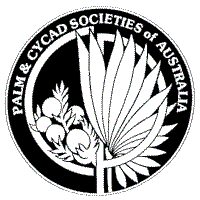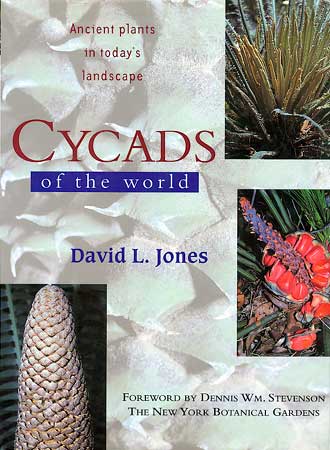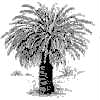|
Book Reviews
Cycads of the World |

| |||
|
| ||||
|
Cycads of the World by David Jones Published by Reed New Holland
From the Forward: |

|
|
Cycads have also been used as a food source in many regions, including Africa, Asia,
Australia and the Americas. More recently they have been used as an alternative food
source in times of deprivation, such as during World War II when shipping routes where
disrupted in the South Pacific and the West Indies. This led to the discovery of Guam
dementia, a neurological disorder caused by cycad toxicity. They have, of course, long
been known to cause neurotoxicity in domesticated grazing animals.
In the early 17th century, the early explorers brought the first cycad plants to Europe. In recent years renewed effort has gone into understanding and cultivating these plants because of their relative scarcity in the wild and because of their archaic features. There are few books on cycads and none on cycad horticulture. Not since 1919, when Charles Joseph Chamberlain published a general popular account of the cycads, has such a book as David Jones' Cycads of the World appeared. Given that all cycads are listed as endangered species and protected by CITES (International Convention on Trade in Endangered Species) and many private and public gardens are trying to propagate these plants, there is an obvious need for'such a book. Fortunately, David Jones, who has written well illustrated books on ferns, palms, and orchids, has recognised this need. David brings many years of expertise to this book, based upon his horticultural and scientific interest in these plants. In this book cycads are placed in their evolutionary and historical perceptive by a concise treatment of their fossil history. This in turn is augmented by a chapter on cycad biology with particular reference to reproductive biology, distribution, and ecology. All these aspects are necessary to achieve a level of understanding about these plants in their habitat if one is going to successfully propagate them. Another important feature of this book is its treatment of all cycad species: a formidable task given the lack of modern systematic treatments of some genera. Each genus is covered with respect to its distribution and general information and keys to the species are given for the smaller, well-known genera. The species descriptions are concise and informative. They include the etymology of the name, an accurate description of the plant, habitat and distribution, and horticultural information on seed germination, growing conditions and propagation methods where known. Most species entries are accompanied by excellent photographs. This book is of interest and value to a wide audience. Anyone interested in cycads, whether from a conservation, scientific, or horticultural perspective, will find that this books suits their needs. Enjoy!
Dennis Wm. Stevenson (Webmasters opinion - far and away the best book about cycads, and the only cycad book you really need, unless you get very enthusiastic.) |
 |
 |
 |
 |
 |
 |
||||